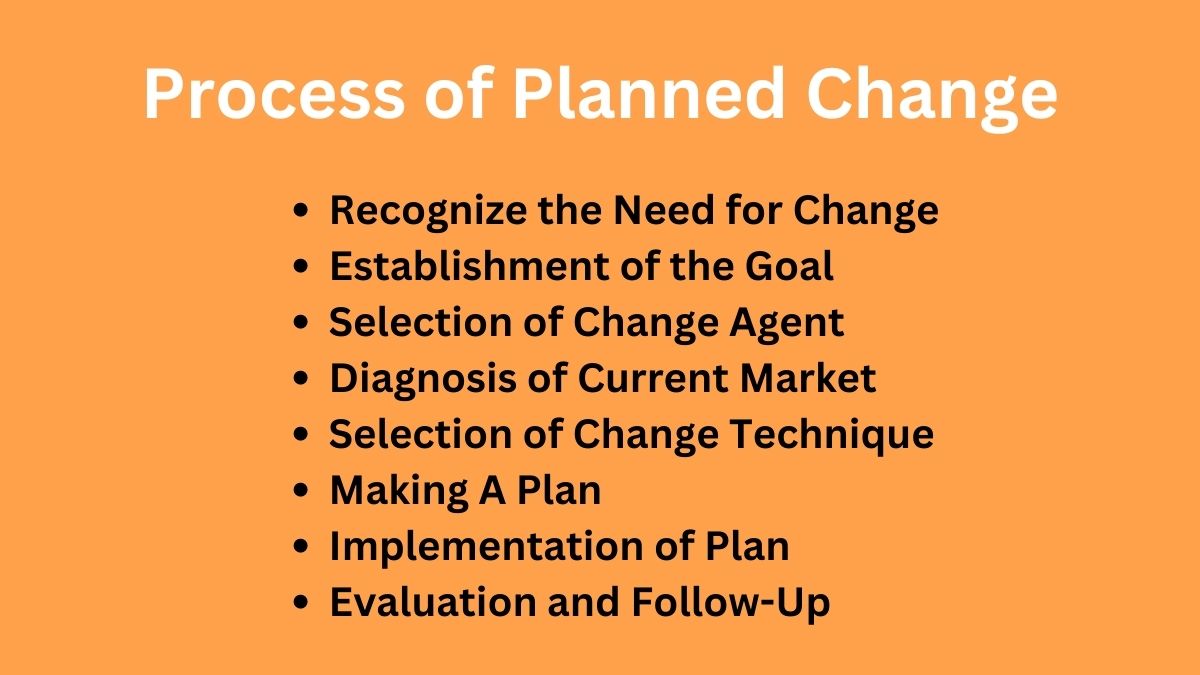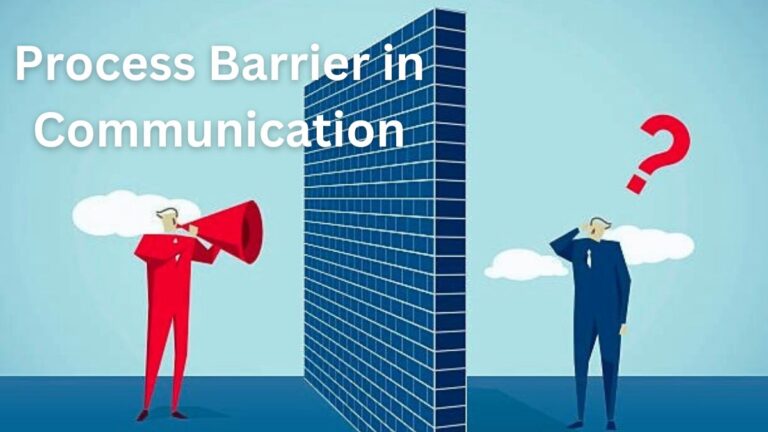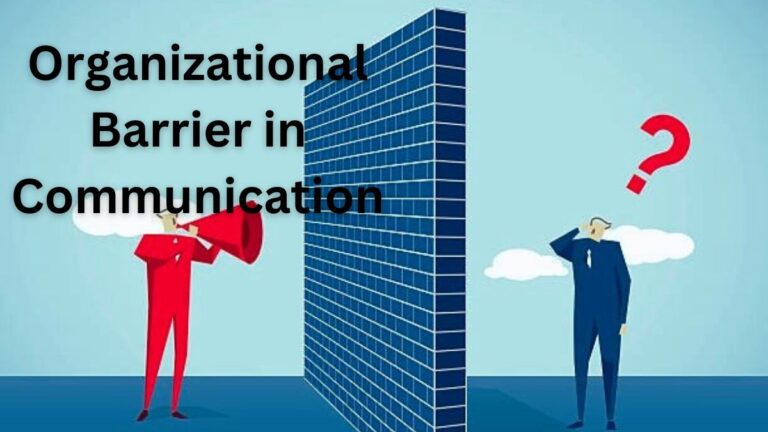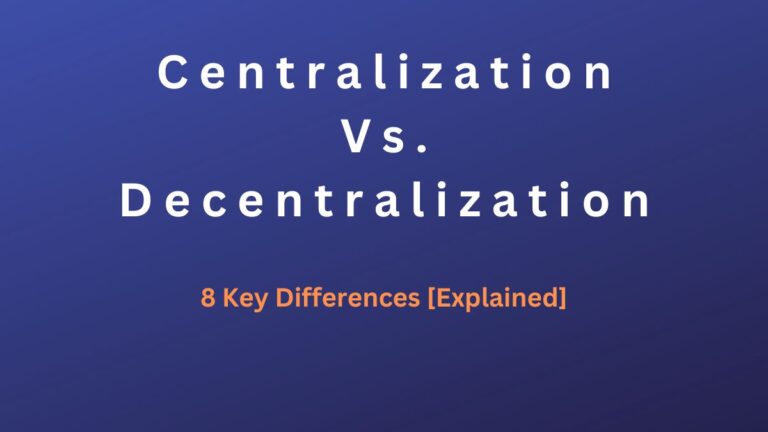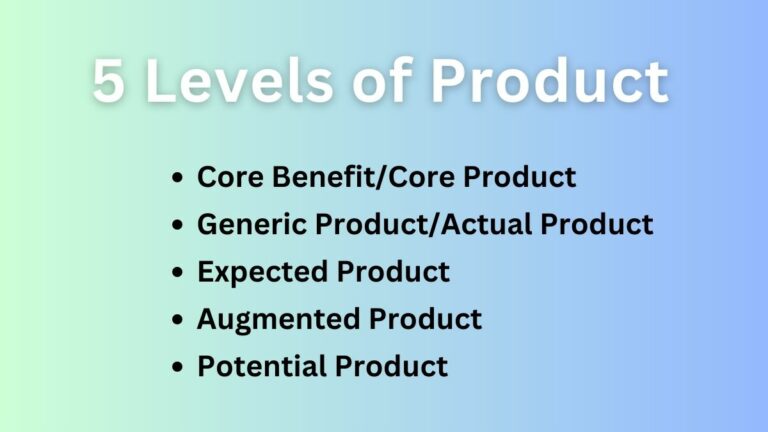The 8-Step Process of Planned Change [Explained]
Process of Planned Change
The planned change includes a thoughtful change in the organization’s functioning systems to meet the changing demands of the business environment. The following eight are the main steps for the successful implementation of the planned change process.
Recognize the Need for Change
In the first step of planned change, you should recognize the need for change. You must realize your organization needs change for success.
Internal and external are the two main forces that influence organizations to initiate change. Usually, this activity is done by a top manager who determines why the change is necessary.
Establishment of the Goal
The establishment of a goal for the change is part of the second step of planned change. Remember that before making any changes it is necessary to determine why the change is taking place.
Unplanned change or sudden change or a change without its specific objective will not support the organization’s performance. The goal for change should be specific, realistic, and time-bound.
In addition, this goal for change should be linked to your organization’s resources and capabilities. Goals that require more resources to achieve than the organization has would negatively affect productivity and profitability.
Related: What is Organizational Change?
Selection of Change Agent
A change agent is a person who takes responsibility and initiates the planned change process. Everyone in your organization would not be a good change agent.
Select the one who is capable of understanding change goals and choosing the right ways to achieve those goals. He should be able to study, understand, and evaluate the market and make the right plan.
Diagnosis of Current Market
As mentioned above, internal and external forces are the main elements that influence change in the organization. They have affected the past performance of the organization and they also affect the current and future too.
Diagnosis/analysis of related variables to change is necessary to understand their effect on the change. You should identify the related factors to the change and analyze their probable impact on it.
Understanding such factors helps to select the appropriate tools and techniques for implementation.
Selection of Change Technique
Choosing an appropriate technique or strategy for change is necessary for successful change implementation. The change agent should be able to design a realistic change technique.
For this, as the market has been analyzed it will help to choose the right change technique. In addition, it is necessary to discuss with employees about the change technique you wish to choose, whether works or not from their perspective.
Also, it is important to explore business leaders’ or other similar companies’ ideas of how they pass similar changes.
Making A Plan
A plan is a way that gives you a roadmap for achieving your goal. Once you choose the right change technique, the next step in the planned change process is making a plan to execute the change.
This change plan should outline why, who, and when certain activities should be done to achieve the change objectives. The plan should explain each and every activity of the change.
In addition, the plan should explain who is responsible for what activities, the time to be completed, and the resources required to effectively implement the plan.
Implementation of Plan
This is the step where the plan is put into operation. This is where the change has begun. Effective implementation is necessary to get the desired results.
During the implementation process, in addition to defining the roles and responsibilities of employees, the change agent should guide them and provide necessary resources and instructions when needed to initiate the change effectively.
Evaluation and Follow-Up
It is necessary to check whether or not the planned change process has worked or not. In this last step of planned change, managers should compare the actual change performance and the goal set in step 2. The comparison should answer whether or not the desired goal is achieved. This step further helps management to determine whether further change is necessary and set proper guidelines for future activities.
Read Next: Strategies To Motivate Employees
Sajan Kushmi is a content writer with more than 4 years of experience. He holds BIM Degree. He write on the topics related to Management, Marketing, and Entrepreneurship.
